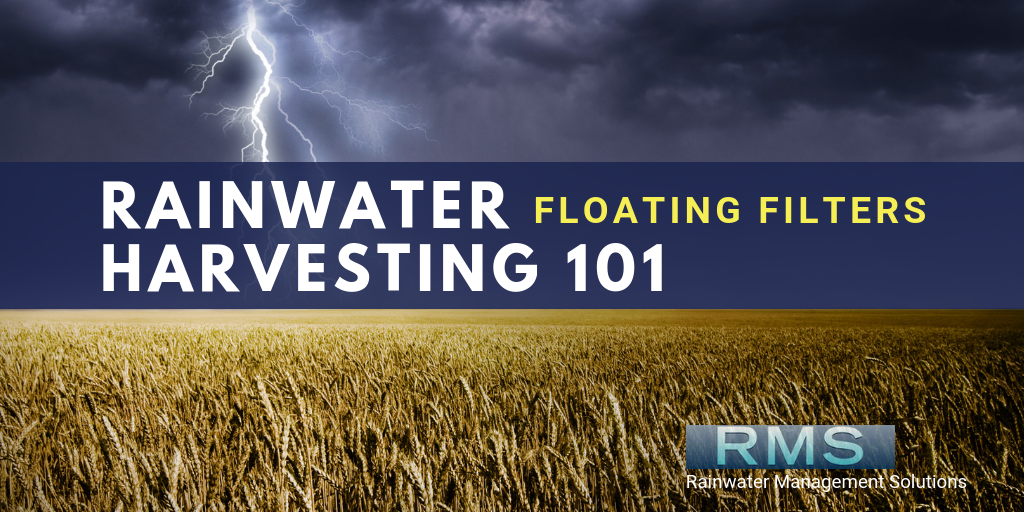Continuing our series of posts onRainwater Harvesting 101, today we will look at the use of floating filters for extracting the rainwater. After taking the proper steps to pre-filter the rainwater and use a smoothing inlet to prevent disturbing the biofilm, you'll eventually want to use that rainwater, right? The floating filter offers the best way to extract the cleanest water from the tank to take it to end use location.
Let's start by looking at the picture below:

As mentioned in previous posts, the small bits of sediment that make it into the tank after pre-filtration will typically either sink to the bottom of the tank to form the biofilm or float to the top of the water level. Very little particulate remains suspended at this point. Using a floating filter allows you to draw water from this area between the surface level and the bottom as the actual filter sits below the float as shown above. Typically rainwater is drawn from 6-8" below the surface and as such avoids the majority of particulate.
These floating filters are called "filters" for a reason as they have stainless steel mesh screens to help filter out sediment in an additional step. The coarse floating filter contains a screen that keeps out particles larger than 1.2 mm in size, while the fine floating filter filters out particles larger than .3 mm. This is just an additional step in trying to reduce the amount of sediment that makes it to the end use.
We use food-grade suction hose to connect the end of the floating filter to the pump. We add hose to allow the float to move more as the water level in the tank fluctuates.
This step reduces the amount of particulate in the water which promotes longevity of pumping systems, is less likely to be discolored, less likely to carry sediment that has pathogens, and reduce the frequency of needing to do maintenance on post-tank filtration components.


